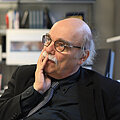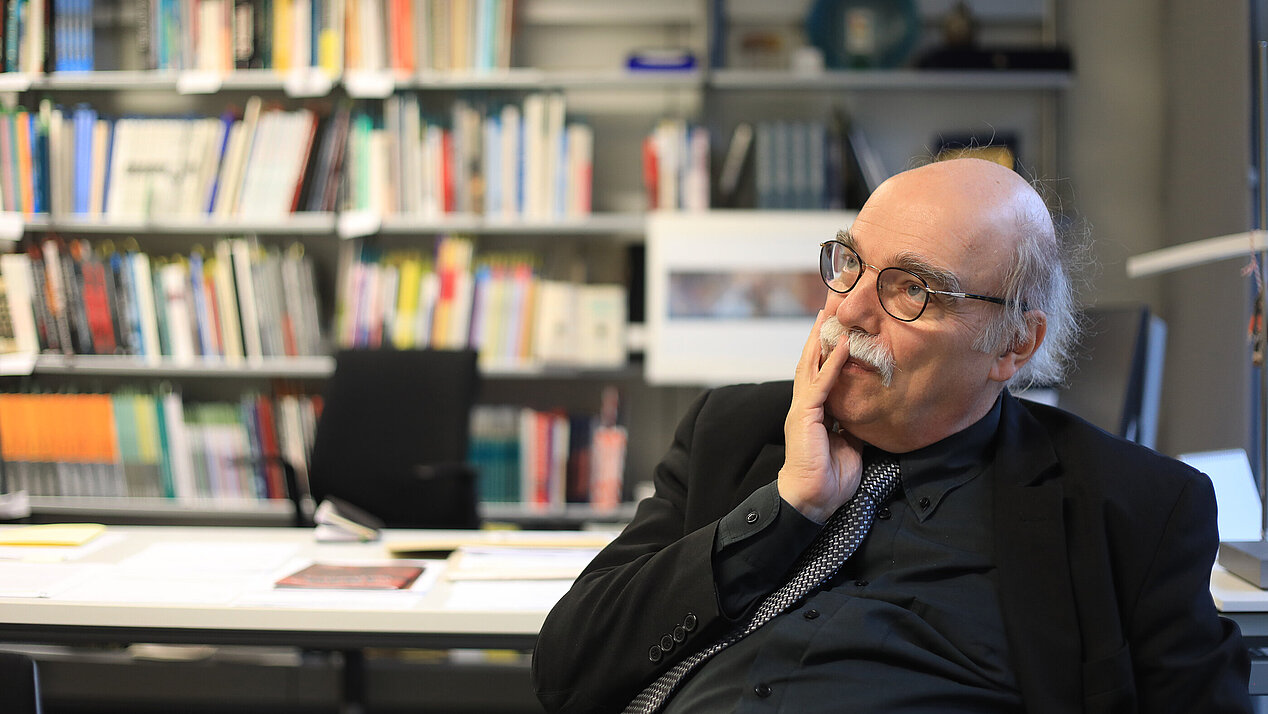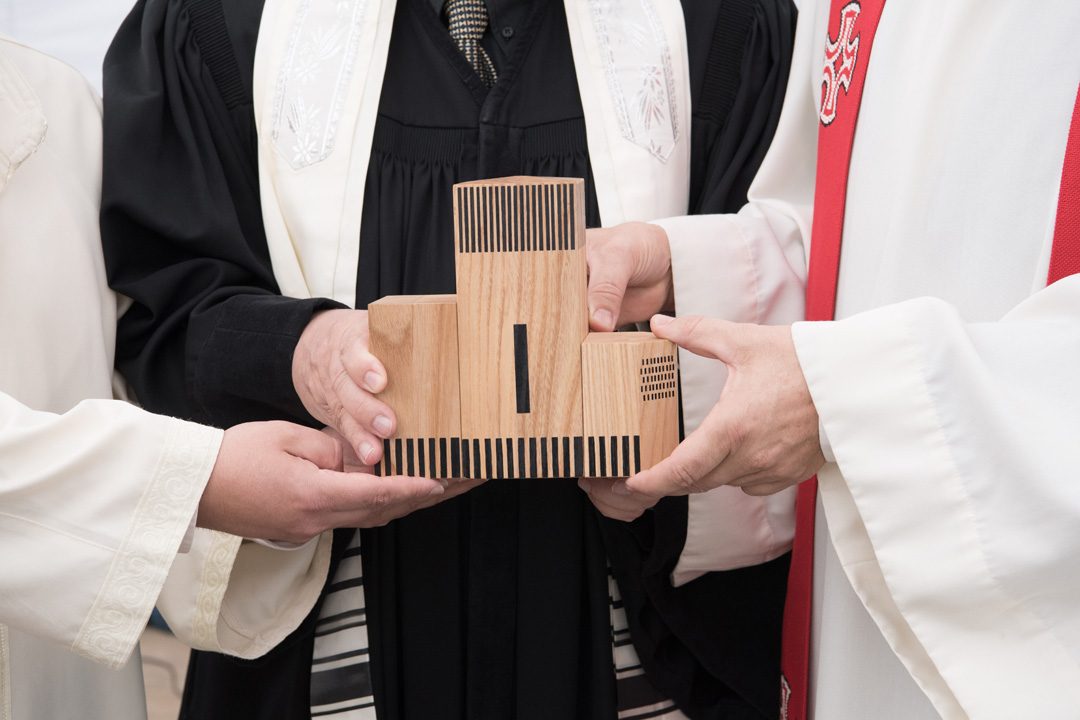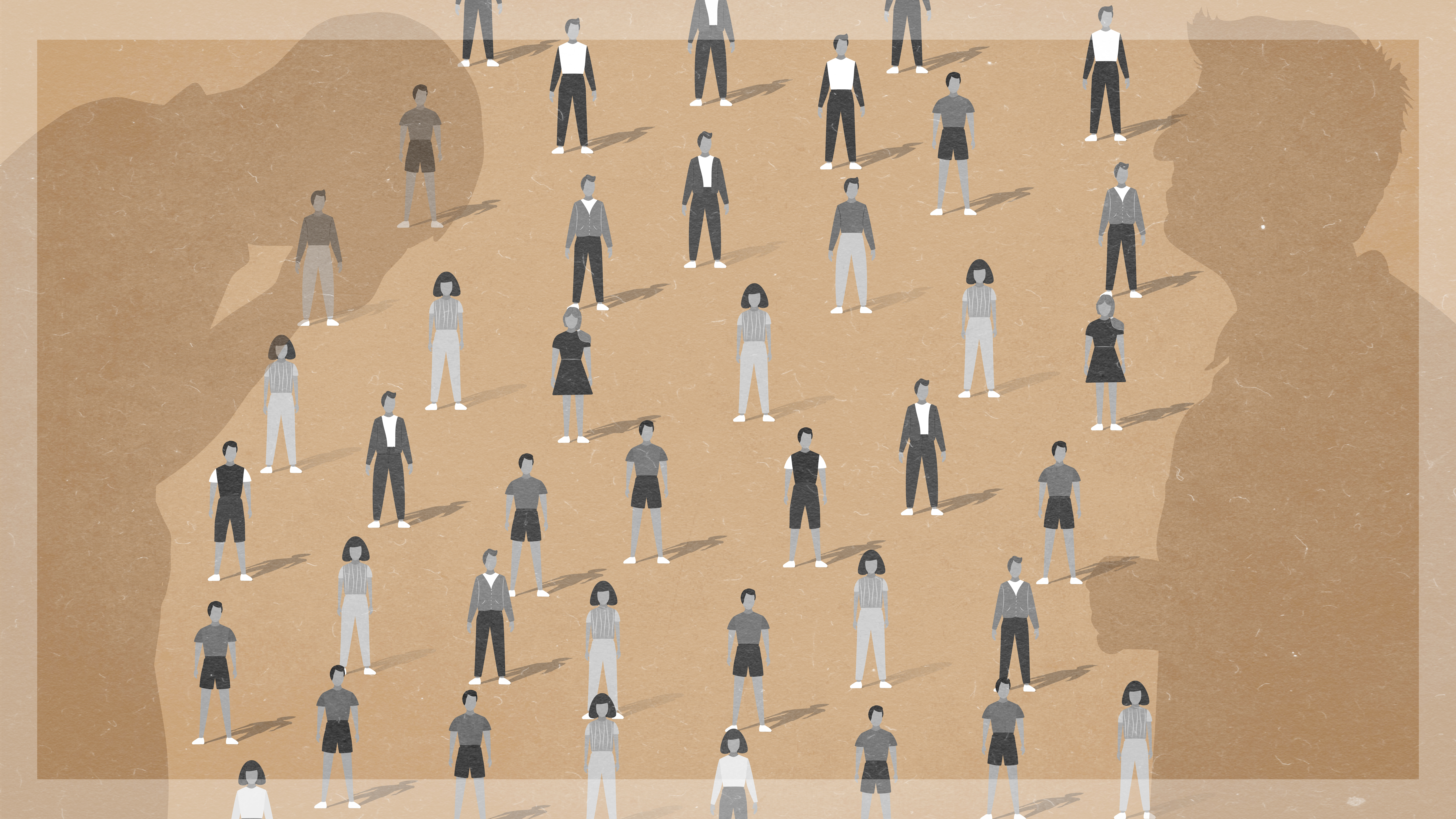ifa: Mr Nachama, Germany is well renowned when it comes to remembering and accounting for the past. But do we sometimes forget about the present and the future in commemorating and looking back so much?
Andreas Nachama: Of course there's always a risk of that happening, but as a historian I would say, dealing with history, which is always a construct of the present, contributes greatly to the future, especially when the basis of looking back is to learn from the past.
ifa: You helped found the Berlin documentation centre Topography of Terror and directed it for nearly 20 years. The centre focusses on the crimes of the Nazi state. What can we in the present learn from this period of history?
Nachama: When properly understood, the Third Reich was first and foremost an authoritarian state that victimised anyone because police actions were not subject to control by independent courts. This shows what happens to a society under an authoritarian, uncontrollable structure in which people are not equal before the law. First, people are excluded, ruined, and then murdered. Anyone who doesn't fit the 'national community' can be targeted – minorities like Jews, Sinti and Roma, clinically ill patients, members of the opposition, homosexuals, prisoners of war and others.
Considering All Victims of Society
ifa: At the same time, the commemoration of Holocaust victims, particularly Jews, is central to the German culture of remembrance. However, other victimised groups are still pushing for visibility.
Nachama: Yes, and I think this focussed retrospection on one aspect of the repression and the victims of the Third Reich is an inadmissible hierarchisation. Within the last few years, the historical narrative in Germany, much like society as a whole, has been intensely focussed on individual pieces of the mosaic. This is understandable considering that research progresses this way, but it's also necessary to look at the big picture. The moment when we look at the Holocaust at a microscopic level, we lose our perspective. And we always have to be aware of what this does to the whole of society.
ifa: And what does this mean for the culture of remembrance?
Nachama: In the case of Nazism, we have to consider all of the victims of society. It may seem odd to commemorate the fallen Wehrmacht soldiers, for example, but if we don't, then we have failed to understand the dimensions of the crimes. There is more to remembering and learning about the Third Reich and its victims than strictly looking at the Holocaust.
The relationship between people of Jewish and non-Jewish faith in Germany will only be normal when it's no longer an issue.
ifa: This year we are commemorating 1,700 years of Jewish life in Germany. The event you attended as part of the Lecture Programme revolved around these celebrations. The nationwide commemorative year aims to make Jewish life beyond the Shoah visible, to tell more stories of everyday life and diversity. How would you describe Jewish life in Germany?
Nachama: Basically, I would say that it's still not normal – simply because you and I are addressing it now. The relationship between people of Jewish and non-Jewish faith in Germany will only be normal when it's no longer an issue. In addition to that, Jewish life as such isn't always recognisable from the outside. It's also impossible to put a precise figure on this. Not all Jewish people belong to a religious community. Officially, there are around 100,000 Jews in Germany, but I estimate that there are twice to three times as many.
The Holocaust Mirrored in Personal History
ifa: You were born and grew up in West Berlin in 1951. Your parents were the only survivors of the Shoah in their families. How did you become aware of the dimensions of the Holocaust and its impact on your own family history?
Nachama: I puzzled it together piece by piece. And for a long time, as a matter of fact, it was a puzzle with many missing pieces. My parents basically never talked about. Then in high school I started to read books about it, for example Alan Bullock's Hitler biography. But for me, what was more important than the lessons in school were the conversations with people who experienced that time in history. I still remember some unusual incidents.
ifa: For example?
Nachama: In 1961 I went to Italy with my father, who was from Greece and came to Berlin after being interred in Auschwitz and Sachsenhausen. We visited one of his old friends, whom he always called a pen pal. Of course I was interested in how they met. His friend told me that he was subjected to forced labour in Germany as an IMI, or Italian military internee. My father had met him at the Berlin-Lichtenberg train station in 1945 shortly after they had been freed and were on their way home. This is how I began to learn, at 10 years old, that the Second World War raged far beyond the borders of Berlin and Germany.
ifa: In the Topography of Terror, you dealt extensively with the perpetrators. How did this effect you personally?
Nachama: Actually, since my childhood I have been interested in the perpetrators; I knew the history of the victims already. My mother survived the war in hiding in Berlin. Her helpers and those who suffered alongside her, other Jews and deserted Wehrmacht soldiers, were like uncles and aunts to me. Whenever they visited and talked about their experiences during the war, I was always extremely interested. But they never spoke about the offenders.
ifa: In 1972 you studied history and Jewish studies at the Freie Universität in Berlin. Was that an attempt to get closer to your own history while maintaining a professional distance?
Nachama: That actually didn't really matter much, especially since the focus of my history degree was the early modern period. But of course, in my work for the Topography of Terror, it was always clear to me that as a Jew, I also had a personal investment in certain topics, like when it came to the Jews in Greece. In this case, my colleagues took over this topic because I wouldn’t have been able to be objective enough.
Making History Tangible
ifa: Currently, there is a lot of discussion about how the Holocaust and other Nazi crimes can be conveyed to the next generations in a multicultural society with increasingly greater temporal distance and fewer and fewer contemporary witnesses. How do you view this transformation? What role should history lessons play in this shift?
Nachama: Perhaps this change is also a chance to look at everything with more composure. Naturally, contemporary witnesses always have their own, very personal perspective of history, which is significant. Memorial centres must become places of learning that are as broadly based as possible. And in school, history has to be made tangible outside of the classroom.
ifa: And what could this look like?
Nachama: I remember a visit from a class of students from Berlin who found their favourite Italian restaurant on a list of so-called 'wilden KZs', or wild concentration camps. Starting in 1933, wild concentration camps were improvised places of torture set up by Nazi storm troopers, usually in the back rooms or cellars of pubs. The class and the teacher then went searching for more clues. They talked to the restaurant owner, with people living in the building. One of them mentioned a 'strange room in the cellar' that we then had a look at. You could still see the chains on the wall. Their favourite Italian restaurant had actually been a wild KZ. I imagine those young people will never forget that. They were captivated because it was a part of their own reality.
ifa: And yet it seems difficult to learn from history in such a way as to keep anti-Semitism from still being an issue today.
Nachama: My mother always said that what we are experiencing today is not anti-Semitism. Perhaps it's comparable to the early stages of intolerance from back then, but it can't be compared to what she experienced. Germany today is not the country was in 1933. Of course we have problems and they have to be acknowledged as such. Just think of the recent attacks in Halle or Hanau. We live in a society where there are real right-wing terrorist, anti-Semitic threats. But we have to consider them closely. Anti-Semitism has always been present and attacks like these are always directed at the whole society. We are all called upon to stop hate as the basis for exclusion.







![illustration: edeos [Translate to english:]](/fileadmin/Content/images/mediathek/blog/Forum_Blog/ifa-forum_stefan-weinert_die-stimme-der-stillen_illustration_edeos.jpg)